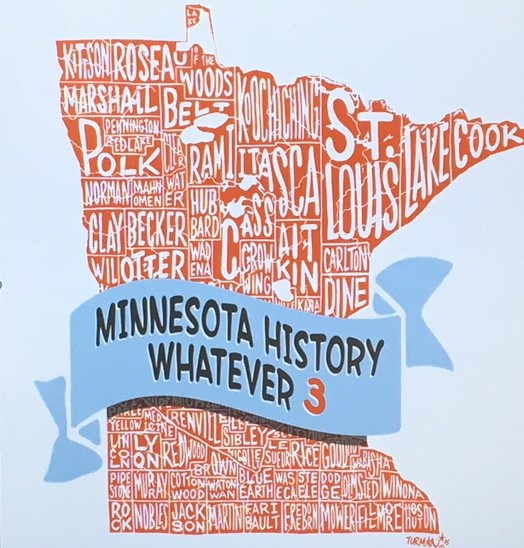
Monday, March 25, 2019, I had the pleasure of preaching to a choir –follow historians and history advocates at the Minnesota History Whatever 3.
Stephen Osman, now-retired from his position as Senior Historian at the Minnesota Historical Society (MNHS), and Megan Kellom, Archival Collections Cataloger specializing in government documents at the MNHS, joined me.
Our collective pitch: To tell new, inclusive stories, we need to include new sources.
Kellom told us about the wealth of underused government records and reference aids available to researchers in the Gale Library at the MNHS. Osman took us on a virtual research trip to the National Archives, whetting our appetites with new documents turning up in the ongoing search for Federal Military records generated in 1862-63 by the concentration camp at Fort Snelling where Dakota civilians were interned, and for the same records from Dakota Prison at Mankato.
I gave an unabashed pitch for the acquisition, digitization, and use of previously unknown and uninterpreted primary sources in the National Archives. I showed images from two of the four collections at NARA I have discovered and roughly cataloged via the grants of generous donors administered through the Minnesota Independent Scholars’ Forum.
As promised, I will devote several posts to images and transcriptions as samples of the content of these collections. It is a small way I can thank the visionary people who have funded the discovery work in the conviction that these sources and others in the National Archives are a legacy we can make accessible in real-time.
Carrie Reber Zeman


A number of years ago I purchased a copy of ” The Population of Fort Ridgely During the Siege of the Dakota Conflict of 1862″ I was disheartened to see my ancestors listed as living “4 miles above
Red”.
We in the family know that they were all living at the “Little Rock Trading Post”.
Only Joseph La Framboise and family, Alexis LaFramboise and family were living in what is now Renville County.
Their sister Julia was with the Amos Huggins family, was captured and freed at Camp Release.
Thank you for commenting, Jerry. Yes: That database contains literal translations of the primary sources I consulted. In this case, the person who recorded that information during the seige of Fort Ridgley in 1862 wrote down what he thought your anscestors told him. But that does not mean it corresponds to the names by which we now refer to historical places. The recorder might also have misunderstood, and therefore misrecorded information. Your anscestors spoke Dakota and French and English while the mean who recorded the information in 1862 spoke English with a Yankee accent. Thank you for clarifying where your anscetors were living in 1862!